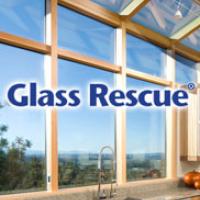
Date: 25 July 2018
These codes are contained in Section 9.36 of the National Building Code (NBC) for new residential buildings and in the National Energy Code for Buildings (NECB) for commercial projects.
Evolving Energy Regulations
Section 9.36 of the NBC divides the country into six zones based on heating degree days (HDD). Maximum U-factor requirements for new residential windows, given in W/m2°C, range from 1.8 down to 1.4 (equivalent to 0.32 to 0.21 in BTU/hr/ft2/°F).
Thermal transmittance is also defined in terms of an Energy Rating (ER), which is a unitless value that balances U-factor, SHGC and air leakage per the equation ER = (57.76)SHGC – (21.90)U – (1.97)L + 40, where L is the fenestration system air leakage rate at a pressure difference of 75 Pa.
For skylights, maximum U-factors range from 2.9 to 2.4 (0.51 to 0.42) across the six zones. A complete explanation of the ER equation may be found in the CSA A440.2 Standard.
Two provinces, Ontario and British Columbia, have their own energy acts that include fenestration. In Ontario, the requirement for windows is U = 2.0 (0.35) or ER ≥ 17; in British Columbia, it is U = 1.8 (0.32) for windows, curtain wall, store fronts and sliding glass doors, and for skylights it is 3.1 (0.55).
Natural Resources Canada (NRCan), created in 1995, is the ministry of the government of Canada responsible for natural resources, energy, minerals and metals, forests, earth sciences, mapping and remote sensing. It works to ensure the responsible development of Canada's natural resources. NRCan is proposing a national regulation on windows and sliding glass doors:
- By 2022: maximum U-factor = 1.6 (0.28); OR minimum ER: 25
- By 2025: maximum U-factor = 1.2 (0.21); OR minimum ER: 34
- By 2030: maximum U-factor = 0.8 (0.14); OR minimum ER: 44
Fenestration Canada will be working closely with NRCan on these goals and how to achieve them.
The Canadian ENERGY STAR program for 2020 is looking at establishing one zone for the entire country with performance levels set at a maximum U-factor of 1.2 (0.21) OR minimum ER 34 nationwide.
Commercial Energy Codes
In the commercial sector, the NECB sets maximum permitted fenestration and door areas. This is given as a ratio of the glazed area to the total wall area and varies from 0.4 to 0.2 with increasing HDD. The maximum U-factor for windows and doors is 2.4 to 1.8 (0.42 to 0.28). All provinces are using the U-factor for compliance, with most using the 2011 version (Nova Scotia uses 2015, note there were no changes in the 2015 NECB for fenestration).
Climate Change
Adopted December 9, 2016, the Pan-Canadian Framework on Clean Growth and Climate Change is a Canadian government plan to meet emissions reduction targets, grow the economy and build resilience to a changing climate. It is based on a “four pillar” framework, involving net zero energy (NZE) new buildings using recommended Energy Step Codes, a proposed separate code for existing buildings, labeling of energy use in buildings and the regulation of equipment and appliances.
With regard to energy step codes, manufacturers will need to understand how to provide product performance details in a manner that energy modelers can use to optimize their designs. Fenestration Canada will be working with the energy modelers to define the data manufacturers will need to provide and publish a white paper in the near future.
 600450
600450

















Add new comment